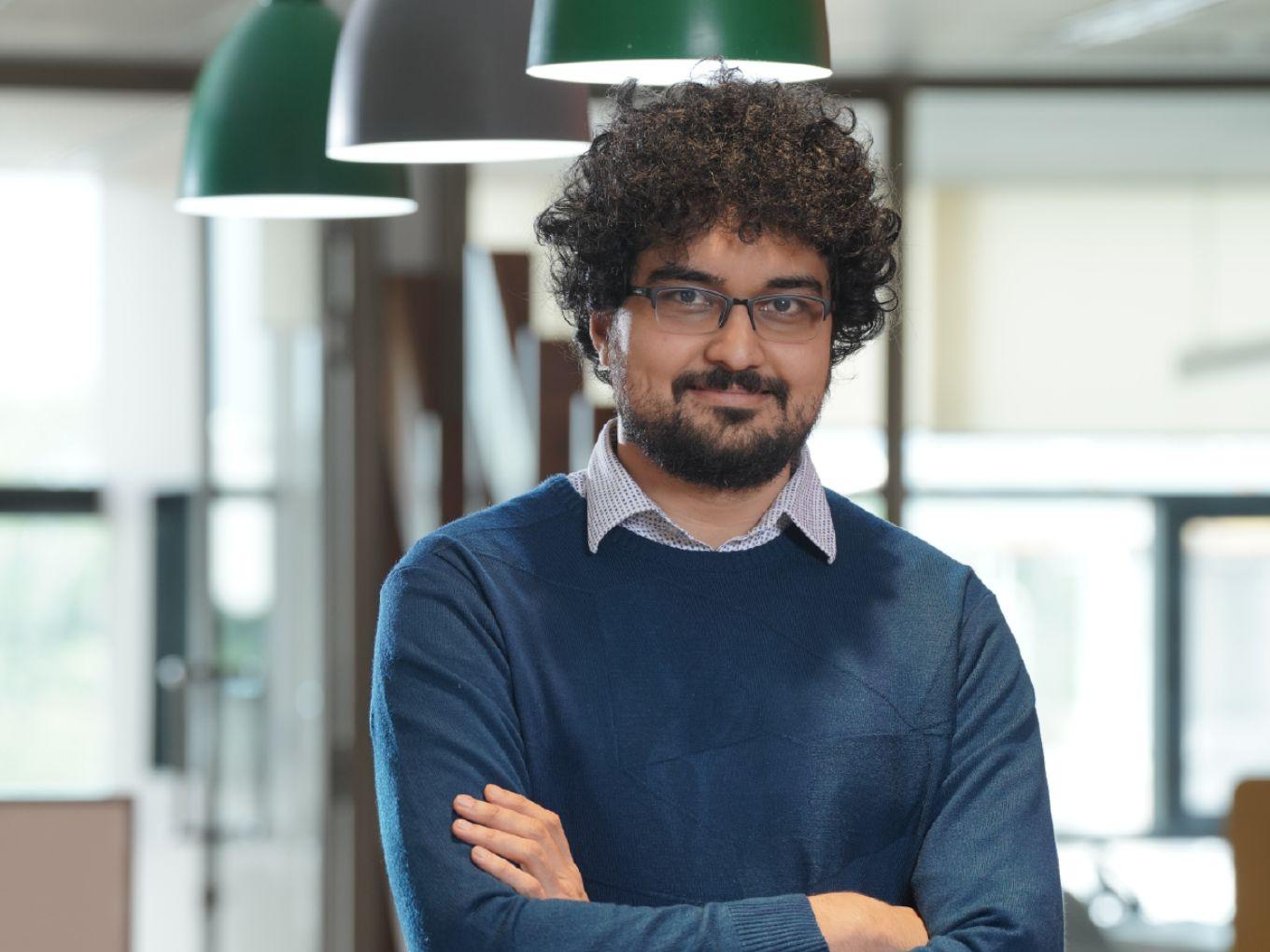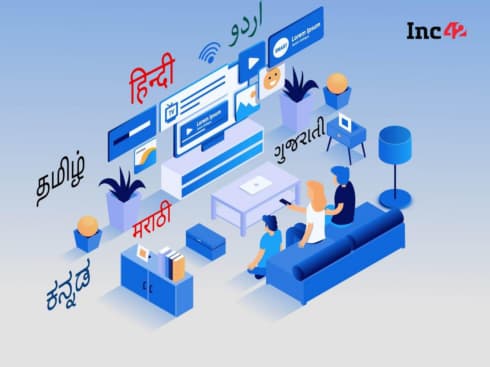There is approximately $25 Bn of India dedicated dry powder and over $40 Bn of dry powder with an India focus, Pai said
Pai says that 3one4 Capital invested $50 Mn last year and is actively looking to invest in startups leveraging digital public goods, operating in segments such as EV, fintech, logistics, enterprisetech
Valuation markdowns are not necessarily determinants of company’s business value unless a down round happens, Pai adds
Despite the ongoing chatter in the startup ecosystem about an extended funding winter, what has become apparent is that there is no dearth of capital, and VCs are patiently waiting for the right opportunities to invest.
In an exclusive interview with Inc42, Siddarth Pai, the founding partner and chief financial officer of early stage venture firm 3one4 Capital, revealed that investors may currently have as much as $60 Bn – $70 Bn in dry powder at their disposal.
“Even though we’ve witnessed the lowest capital inflow into Indian startups over the past twoyears, we have seen the highest accumulation of dry powder. There is approximately $25 Bn of India dedicated dry powder and over $40 Bn of dry powder with an India focus,” Pai said on the sidelines of the Inc42’s MoneyX held in July 2023.
Meanwhile, Pai, who is also a member of SEBI Alternative Investment Policy Advisory Committee (AIPAC), highlighted that both Indian and overseas VCs are transforming their investment playbooks. They are now prioritising companies with sustainable business models over traditional startup metrics like growth, topline, market size, and valuation.
Pai further disclosed that 3one4 Capital
Here are the edited excerpts…
Inc42: What kind of companies is 3one4 Capital looking to back? How many deals have you closed since last year?
Siddarth Pai: Cumulatively, we invested over $50 Mn last year. When there is a funding winter it becomes a buyer’s market. There are fantastic assets that are available and very well-priced right now. We raised and closed our fund within a quarter for this year. We are also seeing a lot of active interest from LPs and larger investors in India.
On the back of initiatives like GIFT City, India is expected to emerge very strongly. With the country now working on unclogging regulatory bottlenecks, a lot of founders will now be willing to stay here rather than move to the US or elsewhere to set up their headquarters. The structural reforms to allow Indian companies to stay in India while going overseas are ongoing and will reap results soon. It’s also an opportunity for startups to build solutions for India from India in such spaces.
Further, with the internationalisation of the India Stack, along with digital public goods, any company that can leverage its full potential will have a first-mover advantage in these areas. So, this emerging space is on our radar.
A good example of a tech-led adoption theme is the EV space. This is because the entire shift that has happened in mobility and local manufacturing makes it a convergent theme. We are witnessing systemically vital technology germinate in this area. For example, there are startups in the fast-charging space, that can solve the commercial EV adoption issue through fundamental technical innovation. We are interested in backing startups building core tech in these areas.
Another area is core digitisation of the enterprise market in India. From logistics and distribution to software for financial institutions and banking, Indian enterprises are now adopting technology to rapidly improve their operating efficiencies at scale. Investors have usually written off the local enterprise market for software and tech services, but this is going to be a large driver of startup revenue growth for the right categories. We have seen lot of companies reach rapid product market fit here, with stable margins and a clear path to sustainability. We have been actively studying and investing in this theme.
Inc42: There is a lot of focus on unit economics among companies, especially because many startups may have overestimated the potential of the Indian market, which is highly price-sensitive. What is your take on this?
Siddarth Pai: India has crossed the $2,000 per capita GDP mark, with the purchasing power parity of around $9,000. What this means is that people have shifted from purchasing for sustenance to consumption – a key constituent of growth. Notably, the business models that have failed to take off in the country are mostly the ones that failed to understand the Indian consumer and may have worked in other markets.
India is not where the US was 40 years ago or where China was 20 years ago; it followed a very different path, as did its consumption patterns. On the other hand, however, we have seen the percentage of digital transactions grow to about 76% of India’s GDP. This mirrors that if Indian customers see value, they will not mind paying for the commodity or service.
Therefore, it is crucial for founders to resonate with the market rather than assuming what may be of value to the market. This is because if you fail, it will be your fault, not the market’s. I think we are now slowly internalizing this lesson.
Inc42: Do you mean founders today need to rethink their strategies?
Siddarth Pai: Absolutely. We have already seen a large number of businesses that some describe as being better at raising money than generating money. The era of low-interest rates and readily available capital is over.
I am very glad that unit economics is finally coming back into the spotlight as opposed to GMV or top-line metrics. It will help create more sustainable businesses in the future and bring discipline to operations.
Interestingly, there is a paradox here as well. The Indian startup ecosystem is full of cases in which founders, despite sitting on sustainable business models, decided to aggressively pursue growth by giving heavy discounts. Look at the e-pharmacy sector. I think the 20-30% discounts that used to exist earlier are now gone. Everyone is now back to selling products on MRP, realising that they will have a better chance of turning profitable.
Many businesses have now realised that a business cannot scale by subsidising customers. Businesses should have the ability to stand alone, and their products and services should be able to command prices imperative for their long-term survival.
As of now, the issue lies in pricing and price structures. Margins can’t be adjusted by accounting; they need to reflect the actual value your product or service generates. You either need to persuade the customer to pay the specified amount or lower your cost structure. Valuation will follow suit. Interestingly, even though we have seen the lowest capital inflow into Indian startups over the past two years, we have also witnessed the largest accumulation of dry powder. There is approximately $60 to $70 Bn in dry powder in the manner described previously.
Inc42: Would this be just domestic capital?
Siddarth Pai: No, this includes both domestic and foreign capital. We at 3one4 Capital closed our latest fund within the span of a quarter. We were very fortunate to end up being able to do that. But look what happened in 2022, a large amount of fund managers did end up raising their funds, but there have been no corresponding investments made by them. So, that is what I mean by dry powder. Large funds have been raised, but we are yet to see correspondingly large deployments and investments.
So, it is more a question of the VCs getting more comfortable with this new emerging paradigm. It is about becoming and building a more sustainable business. So, VCs are now adapting their approach and are pushing founders to build businesses that work. And we are glad because what we wanted them to adopt from day one is now becoming a market trend.
Inc42: More and more unicorns and soonicorns are seeing valuation markdowns in the books of their respective investors. What is your view on the current trend?
Siddarth Pai: I would like to address this in two parts. Firstly, we will have to understand that valuations are not a static affair in the unlisted space, and startups have gotten used to the idea that once they get billion-dollar valuations, they will remain there until they raise subsequent funding.
If you look at the listed market, a company may reach INR 1 Tn in a day and may come down from that mark within minutes, hours or just a few days. So, one major issue was that everyone believed their market valuations were static — a cognitive bias if you will.
Secondly, we need to learn how to differentiate between real markdowns and accounting markdowns. A real markdown happens when an external investor or a third-party investor gives a price to a company and the company accepts that particular price.
However, accounting valuations are those that reflect the accurate value of investments on balance sheets as of a specific date.
Various factors, such as regulatory requirements and investors; risk management policies, explain why even in many prominent Indian unicorns, no two investors will see eye to eye on the extent of valuation adjustments.
Consequently, valuation markdowns do not necessarily represent the true value of a company because it is exceptionally challenging to get two investors to reach a consensus on a company’s value. The only way to truly validate a company’s value is if someone is willing to invest at that valuation.
Therefore, we have not seen real markdowns yet, though rumours exist of upcoming cases.
Inc42: Despite all the dry powder available today, why are some top companies struggling to raise funds?
Siddarth Pai: I believe there are two primary reasons for this ongoing challenge. Firstly, these companies are facing a dwindling number of interested investors in their specific business models that are still burning cash at this scale, compelling them to delay their approach to the market or accept reduced valuations if they need capital immediately. Secondly, the substantial amount of dry powder sitting on the balance sheets and in the bank accounts of venture capitalists and fund managers are becoming burdensome. It is a well-known fact that large funds raise in a set cadence, provided they have deployed earlier funds.
Every two and a half to three years, they embark on raising a new fund of a specific size, and this cycle is hard for them to break. So, if you raised funds in 2021, the expectation is that you should be preparing for your next fundraise around 2024.
However, as we are already in 2023, and if you haven’t made significant investments yet, questions will arise from fund investors and limited partners (LPs). As a result, there will be considerable pressure on fund managers to start making those necessary investments.
Many companies secured substantial capital when global interest rates were low, relying on a few key metrics to justify their next funding rounds. However, this rationale for fundraising does not exist anymore. Therefore, these companies must undergo a fundamental re-evaluation of their entire business strategies.
Inc42: In a bid to become profitable, many companies may have to increase the prices of their products and services, which could have a negative impact on their customers. What is your take on this?
Siddarth Pai: Some businesses will have to undergo a fundamental revamp of their pricing as this customer subsidy cannot continue in perpetuity.
Let’s take the case of Ola and Uber. After they increased their prices, a lot of people believed that they would perish from the Indian market. Surprisingly, they are still running strongly even after increasing their prices and without the need for external capital for a long time now.
I think the easy capital has had an impact on the real cost of products and services. This has now started to fade away. More businesses are choosing to prioritise survival and sustainability over discount-driven growth that distorted margins.
































 Ad-lite browsing experience
Ad-lite browsing experience